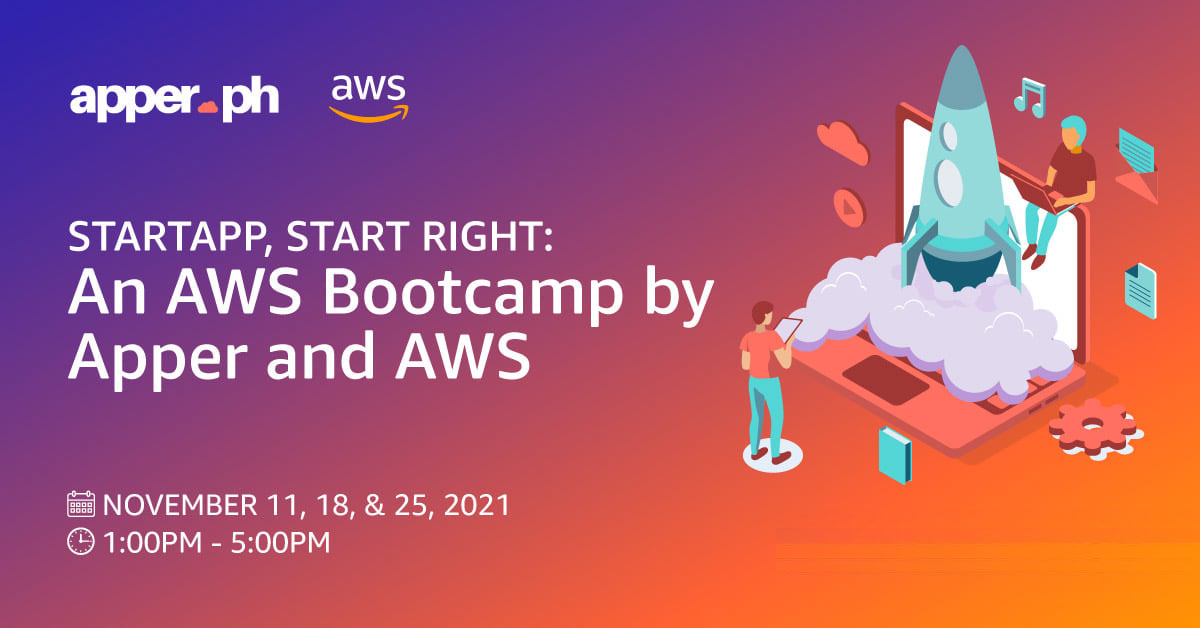We all have heard the buzzword cloud. It seems to be an inevitable evolution for every organization — but what exactly does it mean for you?
What kind of cloud can help you innovate on a budget, save on manpower costs, and increase productivity in your business?
Our Cloud Kapihan Sessions proved to be a great opportunity for us to engage with the entire tech community and cloud formation evangelists. This enabled us to share our insights on migrating to the cloud and hear questions and facilitate an open discussion.
Session 1: The Ins and Outs of a Seamless Cloud Migration
Migrating to the cloud doesn’t have to be a headache. Our first Cloud Kapihan session was conducted by Carl Alarcon, Apper’s Lead Cloud Engineer, last June 14, 2 to 3 pm!
We highlighted the key benefits of cloud migration and provided insights on executing a seamless transition to the cloud through a talk presentation, followed by an open Q&A session.
As one of the top managed partners of AWS, Apper has supported organizations like Zagana and the BIR with their migrations from on-premise or other cloud platforms (i.e. Heroku) to AWS cloud. With our expertise, we’re committed to helping organizations innovate on the cloud!
What is cloud migration?
Cloud migration is the process of moving digital business operations, such as applications, data, and IT processes, from one location to a public cloud provider’s servers.
We recommend applying the Six Application Migration Strategies including: rehost, replatform, repurchase, refactor, retain, retire
Key Takeaways in an efficient cloud migration:
- Assess – Plan
- Mobilize – Identify right processes and personnel
- Migrate and Modernize – works towards optimization and operational excellence
Session 2: Unlocking the Benefits of App Modernization
Our second session followed a similar format and ocused on Unlocking the Benefits of App Modernization.
Key Takeaways on App and Platform Modernisation: The Art of What is Possible
- Customers demand a lot from digital apps and platforms these days: new features and capabilities, highly available, and security.
- As the pandemic continues, companies need to adapt to the changing landscape. The ability to adapt provides challenges to tech teams.
A Quick Review: Microservices
- This involves architectural and organizational approach to software development, where software is composed of small independent services that communicate over well-defined APIs
- Loosely coupled, independent services are independent, loosely coupled from each other
- Autonomous, specialized Benefits include agility, scalability, ease of deployment, tech freedom (best tool for the job), reusability
- Microservices architecture is required to adapt to customer needs protect against unauthorized use, DDoS, and other malicious actors. Data-at-rest and data-in-transit protection.
- Organisation and capability tech team’s organisation need to reflect the architecture and build in-house cloud native capabilities
- It is a journey, experienced partners working together is key Modernisation requires expertise and experience to execute properly. Work with us to start and accelerate the journey.
Session 3: Speeding Up and Automating Infrastructure Provisioning with AWS Cloud Formation
The last session highlighted the key benefits of Speeding Up and Automating Infrastructure Provisioning with AWS Cloud Formation.
What are the benefits of using CloudFormation?
- Improving your automation
- Human-readable template
- Consistency in infrastructure
- Infrastructure replication is done quickly
The verdict:
- Cloud computing has fundamentally altered our perceptions of IT infrastructure.
- Technology has gone a long way from a lot of racking and stacking to a lot of typing and commenting, treating it like a code.
- Infrastructure as Code is a technology that helps organizations provision the same infrastructure repeatedly with ease. However, it requires skills and experience to leverage the full potential of this technology.
Having cloud-based applications and services will then allow companies to free up their computing resources from handling the everyday tasks of their business, and shift their focus to building strategic value to their organization. Organizations that have successfully integrated cloud solutions into their operations have now come up with a blueprint for businesses to follow on the same path.










